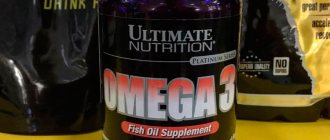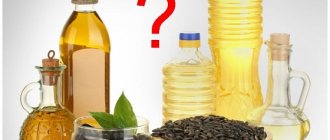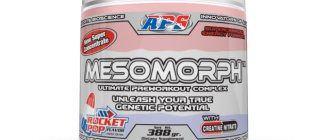What is medium chain triglyceride (MCT) oil?
Medium-chain triglycerides (MCTs) are fats found in foods such as coconut oil.
They are metabolized differently than the long chain triglycerides (LCTs) found in most other foods. Medium chain triglyceride oil is a supplement that contains high levels of these fats and is claimed to have numerous beneficial properties.
Triglyceride is simply the technical term for fat. Triglycerides have two main purposes. They are either burned for energy or stored as fat.
Triglycerides are named after their chemical structure, specifically the length of their fatty acid chains. All triglycerides consist of a glycerol molecule and three fatty acids.
Most of the fat in your diet consists of long-chain fatty acids, which contain 13–21 carbon atoms. Short chain fatty acids contain less than 6 carbon atoms.
In contrast, the medium chain fatty acids in MCTs contain 6–12 carbon atoms.
The following are the main medium chain fatty acids:
- C6 : caproic acid or hexanoic acid
- C8 : caprylic acid or octanoic acid
- C10 : capric acid or decanoic acid
- C12 : lauric acid or dodecanoic acid
Some experts argue that C6, C8 and C10 reflect the definition of medium chain triglycerides more accurately than C12 (lauric acid) ().
Many of the health benefits described below are not attributed to lauric acid.
Conclusion:
Medium chain triglycerides (MCTs) contain fatty acids that range from 6 to 12 carbon atoms in length. These include caproic acid (C6), caprylic acid (C8), capric acid (C10) and lauric acid (C12).
Nutritional facts
There are several different forms of MCT, some more effective than others. The four different forms are caproic (C6:0), caprylic (C8:0), capric (C10:0) and lauric (C12:0) acids.
The shorter the chain, the fewer carbon atoms the acid has, and the faster the body can convert fatty acids into usable energy in the form of ketones. The body produces ketones when it uses fat for energy instead of glucose.
Regardless of all this, MCT oil is better than long chain triglycerides for health, especially for people with difficulty digesting other forms of fat, malabsorption problems, digestive disorders like leaky gut syndrome, Crohn's disease, gallbladder infections and so on.
Content of medium chain triglycerides in foods as a percentage of total fat:
- Coconut oil - 15%
- Palm oil - 7.9%
- Cheese - 7.3%
- Butter - 6.8%
- Milk - 6.9%
- Yogurt - 6.6%
Medium chain triglycerides are metabolized differently
Given the shorter chain nature of MCTs, they are quickly broken down and absorbed by the body.
Unlike longer chain fatty acids, MCTs go straight to the liver, where they can be used as an immediate source of energy or converted into ketones. Ketones are substances that are produced when the liver breaks down large amounts of fat.
Unlike regular fatty acids, ketones can travel from the blood into the brain. They are used as an alternative energy source for the brain, which normally uses glucose for energy ().
Please note: Ketones are only produced when your body is low on carbohydrates, such as when you follow a keto diet. The brain always prefers to use glucose as an energy source instead of ketones.
Because the calories contained in MCTs are more efficiently converted into energy and used by the body, they are less likely to be stored as fat. However, further research is needed to determine their ability to aid weight loss ().
Since medium chain triglycerides (MCTs) are digested faster than LCTs, they should be used as energy first. If there is an excess of MCTs, they too will end up being stored as fat.
Conclusion:
Due to their shorter chain length, medium chain triglycerides are broken down and absorbed in the body faster. This makes them a quick source of energy and they are less likely to be stored as fat.
Composition of base oils
Base oils are based on saturated and unsaturated fatty acids. The predominance of the former in the oil causes it to harden at room temperature. The predominance of the latter, on the contrary, makes it liquid.
Among the unsaturated fatty acids, oleic acid should be noted, which improves the transport properties of base oils due to the fact that they are well absorbed into the skin. Other unsaturated acids also play an important role - linoleic, linolenic and gamma-linolenic, which are not produced in the body, but can only be introduced from the outside. So their name - essential unsaturated acids - is quite justified. The acids contained in omega-6 oils, which include linoleic and gamma-linolenic acids, help to improve the health of dry and sensitive skin.
The high content of linolenic acid and its derivatives in vegetable oils allows them to be recommended as an anti-inflammatory agent for people suffering from skin diseases. Some linolenic acid derivatives have long and complicated names. Therefore, they are often called omega-3 acids.
The technological process for the production of cosmetics involves the use of saponifiable and unsaponifiable fractions. We'll go into more detail about what this means below.
Fatty acids combined with glycerol form the saponified fraction, which is responsible for the external characteristics of the oil. When alkali is added to the saponified fraction, soap is obtained.
The unsaponifiable fraction is more often used in the production of cosmetics, because it is rich in vitamin E, carotenides, phytosterols and a number of other bioactive components. The most popular among cosmetologists is the unsaponifiable fraction of olive oil, which is extremely beneficial for aging skin due to its high regenerative ability. When adding alkali, no soap is formed.
In cosmetology, such qualities of vegetable oils as absorption and fluidity are important. If the oil is poorly absorbed, creams based on it will create discomfort and a feeling of oily skin.
Rapid absorption, in turn, can cause acne. Therefore, in cosmetology, as a rule, mixtures of several oils are used in the optimal ratio for the skin.
Sources of Medium Chain Triglycerides
There are two main ways to increase your MCT intake - through food intake or through supplementation such as MCT oil.
Food sources
The following foods are the richest sources of medium chain triglycerides, including lauric acid, and are listed along with their percentage of MCTs (, , , ):
- Coconut oil: 55%
- Palm oil: 54%
- Whole milk: 9%
- Butter: 8%
Although the above sources are rich in medium chain triglycerides, their levels vary. For example, coconut oil contains all four types of MCTs, as well as small amounts of LCTs.
However, its MCTs consist of large amounts of lauric acid (C12) and smaller amounts of C6, C8 and C10 fatty acids. In fact, coconut oil contains about 42% lauric acid, making it one of the best natural sources of this fatty acid ().
Compared to coconut oil, dairy sources tend to have a higher proportion of C6, C8 and C10 fatty acids, and a lower proportion of lauric acid.
In milk, C6, C8 and C10 fatty acids make up 4–12% of total fatty acids, and lauric acid (C12) makes up 2–5% ().
MCT oil
MCT oil is a highly concentrated source of medium chain triglycerides.
It is produced through a process called fractionation. This process involves extracting and separating MCTs from coconut or palm oil.
MCT oils typically contain either 100% caprylic acid (C8), 100% capric acid (C10), or a combination of both.
Caproic acid (C6) is usually not included due to its unpleasant taste and odor. Meanwhile, lauric acid (C12) is often absent or present only in small quantities ().
Given that lauric acid is the main component of coconut oil, be wary of manufacturers who market MCT oils as “liquid coconut oil.”
Many people debate whether lauric acid degrades or improves the quality of MCT oils.
Many market proponents tout MCT oil as being healthier than coconut oil because caprylic acid (C8) and capric acid (C10) are thought to be more quickly absorbed and processed for energy compared to lauric acid (C12) (, ).
Conclusion:
Food sources of MCTs include coconut oil, palm oil, and dairy products. However, their composition of medium chain triglycerides may differ. Additionally, MCT oil boasts higher concentrations of certain MCTs. It often contains C8, C10, or a combination of both.
What products or preparations contain
TSCs are found in large quantities in milk fat and oil obtained from coconut and palm kernels. However, these fats are best absorbed from supplements, which is why they are included in sports nutrition.
To increase energy, TSCs were added to the Max Gain Plus gainer. With its help, athletes become more resilient, which allows them to train longer in the gym.
TSC was also added to the PROBOLIC-SR protein complex. These fats, together with protein components that make it possible to gain weight, speed up this process. TSC allows the human body to gain weight without interruption, since when broken down they provide additional energy.
Which source is better?
The best source for you depends on your goals and desired MCT intake.
To obtain potential beneficial effects, it is not clear what dose is needed. In studies, doses range from 5 to 70 grams of MCT per day.
If you are looking to improve your overall health, using coconut oil or palm kernel oil in your cooking may be enough.
However, for higher doses, you may want to consider MCT oil.
One of the benefits of MCT oil is that it is virtually tasteless and odorless. It can be consumed straight from the can or mixed with food or drinks.
Conclusion:
Coconut and palm oils are rich sources of medium chain triglycerides, but MCT oil supplements contain much higher amounts.
Mode of application
The dose of TSC may depend on the individual physical activity of the athlete and the reasons for taking this supplement. Children under 18 years of age are recommended to take from 15 to 30 ml of TSC, and adults - from 50 to 100 ml . For enhanced treatment of seizures, higher doses are prescribed, but they are determined by the attending physician on an individual basis.
Fish oil: indications for use, contraindications, consequences, side effects, etc.
Wide grip pull-ups are an exercise that helps develop the upper back. On this page you will find a detailed description.
MCT Oil May Potentially Help You Lose Weight
Although research results have been mixed, there are several ways MCTs may help promote weight loss, including:
- Lower energy density . MCTs provide approximately 10% fewer calories than LCTs—8.4 calories per gram for MCTs versus 9.2 calories per gram for LCTs. However, note that most cooking oils contain both MCT and LCT, which may negate any difference in calories ().
- Increased satiety . One study found that compared to LCTs, MCTs resulted in greater increases in levels of peptide YY and leptin, two hormones that help reduce appetite and increase feelings of fullness ().
- Fat storage . Given that MCTs are digested and absorbed faster than LCTs, they are primarily used as energy rather than stored as fat. However, MCTs can also be stored as fat if consumed in excess ().
- Burning calories . Several older animal and human studies suggest that MCTs (mostly C8 and C10) may increase the body's ability to burn fat and calories (, , ).
- Greater fat loss . One study found that a diet rich in MCTs caused greater fat burning and loss of body fat mass than a diet higher in LCTs. However, these effects may disappear after 2–3 weeks after the body adapts ().
However, keep in mind that many of these studies have small samples and don't take into account other factors, including physical activity and total calorie intake.
Additionally, while some studies have shown that MCTs may help you lose weight, other studies have found no effects ().
According to an earlier review of 21 studies, 7 assessed satiety, 8 assessed weight loss, and 6 assessed calorie burning.
Only 1 study found an increase in satiety, 6 found weight loss, and 4 found an increase in calorie burning ().
In another review of 12 animal studies, 7 reported decreased weight gain and 5 found no difference. For food intake, 4 found a decrease, 1 found an increase, and 7 found no difference ().
Additionally, the weight loss caused by MCT was very modest.
A review of 13 human studies found that the average weight loss on a diet high in MCTs was only 0.5 kg over 3 weeks or more compared with a diet high in LCTs ().
Another older 12-week study found that a diet rich in medium-chain triglycerides resulted in an additional 0.9 kg of weight loss compared to a diet rich in LCTs ().
New, high-quality research is needed to determine how effective MCTs are for weight loss, and in what quantities they need to be taken to be effective.
Conclusion:
MCTs may promote weight loss by reducing calorie intake and fat storage, as well as increasing satiety, calorie burning, and ketone levels in low-carb diets. However, the effects of MCT on weight loss overall are quite modest.
Benefits for weight loss
Medium chain triglycerides help normalize weight in several ways.
- Increases the feeling of fullness. MCT fats have been shown to increase the release of the satiety hormones leptin and peptide YY more effectively than conventional long-chain oils. This helps you stay fuller longer and avoid unnecessary snacking.
- MCTs are rarely stored as body fat. Usually the body uses them immediately to produce energy.
- Against the background of consumption of MCTs (especially C8 and C10), the body more efficiently burns those fats that were already stored in reserve earlier.
- Medium chain triglycerides contain fewer calories than regular fats. And at the same time they provide more energy.
- MCT oils have a positive effect on the functioning of the intestinal microflora, which is necessary for weight loss, since in people who are overweight, the composition of the intestinal flora is altered. And this leads to further weight gain.
- MCTs increase energy potential and improve mood. This makes it possible to avoid compulsive overeating due to nervousness or simply boredom. It also allows you to move more, and therefore burn more calories during the day.
In addition, when consuming large enough amounts of medium chain glycerides, people on a low-carbohydrate diet may be able to afford more carbohydrates. Which is extremely important psychologically for many people who are losing weight.
An important nutritional component when training for weight loss
MCT fats are important for those who practice weight loss training. Typically, intense physical activity requires the use of protein-carbohydrate alternation (BUC diet).
This is not always good for those losing weight, since consuming a sufficiently large amount of carbohydrates does not allow effective weight loss. At the same time, I can’t eat a low-carbohydrate diet because I don’t have enough strength to exercise.
MCT oils, firstly, charge the body with additional energy. And, secondly, they make it possible to eat more carbohydrates without compromising the weight loss process.
Mixtures with medium chain triglycerides are not a miracle pill!
And this is important to understand. These substances help reduce weight. They make staying on an effective low-carb diet easier and more enjoyable.
But they do not provide the opportunity to lose weight by simply swallowing a capsule and without changing anything in your diet or lifestyle.
MCT's ability to improve physical performance
MCTs are thought to increase energy levels during high-intensity exercise and serve as an alternative source of energy by preserving glycogen stores.
Several older studies in humans and animals suggest that medium chain triglycerides may improve endurance performance and offer benefits for athletes on low-carb diets.
One animal study found that mice fed a diet rich in medium-chain triglycerides performed much better in swimming tests than mice fed a diet rich in LCTs ().
Additionally, consuming a meal containing MCT instead of LCT for 2 weeks allowed recreational athletes to tolerate longer periods of high-intensity training ().
Although the evidence appears positive, more recent, high-quality studies are needed to confirm this beneficial effect, and the overall association is weak ().
Conclusion:
The association between MCT and improved exercise performance is weak. More research is needed to confirm these claims.
Other Potential Benefits of MCT Oil
The use of medium chain triglycerides and MCT oil has been linked to a number of other benefits.
Cholesterol
MCTs have been associated with lower cholesterol levels in both animal and human studies.
For example, one animal study found that administering MCTs to mice helped lower cholesterol levels by increasing the excretion of bile acids ().
Similarly, in an earlier study in rats, consumption of unrefined coconut oil was associated with improved cholesterol levels and increased antioxidant levels ().
Another older study of 40 women found that consuming coconut oil along with a low-calorie diet lowered LDL (bad) cholesterol and increased HDL (good) cholesterol compared to women consuming soybean oil ().
Improving cholesterol and antioxidant levels may lead to a reduced risk of developing cardiovascular disease in the long term.
However, it is important to note that some earlier studies reported that MCT supplements had no effect on cholesterol (, ).
One study of 14 healthy men reported that MCT supplements negatively impacted cholesterol levels by increasing total cholesterol and LDL (bad) cholesterol, which are risk factors for cardiovascular disease ().
Additionally, many common sources of MCTs, including coconut oil, are considered saturated fat ().
Although research suggests that higher intakes of saturated fat are not associated with an increased risk of developing cardiovascular disease, it may be associated with several risk factors for developing cardiovascular disease, including higher levels of LDL (bad) cholesterol and apolipoprotein B (. , ).
Therefore, more research is needed to understand the complex relationship between MCTs and cholesterol levels, as well as the potential impact on heart health.
Conclusion:
Diets high in MCT-rich foods, such as coconut oil, may support healthy cholesterol levels. However, the evidence is mixed.
Diabetes
Medium chain triglyceride oil may also help lower blood sugar levels. In one study, diets rich in MCTs increased insulin sensitivity in adults with type 2 diabetes ().
Another study conducted on 40 overweight patients with type 2 diabetes found that taking MCTs improved risk factors for diabetes. Taking it reduced body weight, waist circumference, and insulin resistance ().
Moreover, one animal study found that administering MCT oil to mice fed a high-fat diet helped protect against insulin resistance and inflammation ().
However, evidence supporting the use of medium chain triglycerides for the treatment of diabetes is limited and outdated. New high-quality studies are needed to determine its impact.
Conclusion:
Medium chain triglyceride (MCT) oil may help lower blood sugar levels by reducing insulin resistance. However, more research is needed to confirm this beneficial effect.
Brain function
MCTs produce ketones, which act as an alternative energy source for the brain and thus may improve brain function in people following ketogenic diets (defined as consuming less than 50 grams of carbohydrates per day).
Recently, there has been increased interest in the use of MCT to treat or prevent brain diseases such as Alzheimer's disease and dementia ().
One large study found that MCTs improved learning, memory, and information processing in people with mild to moderate Alzheimer's disease. However, this effect was only observed in people who did not have the APOE4 gene variant ().
Overall, the evidence is limited to short studies with small sample sizes, so more research is needed.
Conclusion:
MCTs may improve brain function in people with Alzheimer's disease who have a certain genetic makeup. More research is needed.
Other diseases and conditions
Because MCTs are an easily digestible and absorbable source of energy, they have been used for years to treat nutritional deficiencies and diseases that interfere with nutrient absorption.
Here are the diseases and conditions that may benefit from MCT oil:
- diarrhea
- steatorrhea
- liver disease
Patients who have had intestinal or stomach surgery may also benefit.
Evidence also supports the use of MCTs in ketogenic diets for the treatment of epilepsy ().
Using MCTs allows children with seizures to eat larger meals and tolerate more calories and carbohydrates than classic ketogenic diets allow ().
Conclusion:
Medium chain triglycerides help treat a number of diseases and conditions, including nutritional deficiencies, malabsorption and epilepsy.
Axial oil, its properties and methods of oil purification
Brief description of the requirements and properties of axial oils Purpose
Axle oils are unrefined straight-run petroleum products used as lubricants. The main area of application is railway rolling stock, where they are used to lubricate the journals of the axles of wheel pairs of cars and diesel locomotives with friction bearings. Sometimes used to lubricate friction units and some light-loaded gear reducers of industrial equipment. Axial oils are produced in three grades in accordance with GOST 610-72: L - for summer use, 3 - for winter use and S - for use in particularly cold regions (northern).
| Axial oils are produced from low-sulfur naphthenic and naphthenic-paraffin oils, and winter and northern oils, as a rule, are distillate fractions, and summer oils are a mixture of distillate fractions with the residue from direct distillation of oil. The main quality indicators of axle oils are viscosity and pour point, which is determined by the specifics of their application: supply to the friction units (to the journals of the axles) is carried out through the fibers of the tamping ends or wicks. The use of a significant amount of axial oils in modern conditions cannot be considered justified either economically or environmentally. It must be assumed that as sliding bearings are replaced more widely in railway rolling equipment with rolling bearings, the high consumption of this type of petroleum products will significantly decrease. In addition, recently new all-season axial oils have been developed and introduced into production, one of which is produced according to TU 38.301.04-21-96. Regeneration methods. Physical methods allow you to remove solid particles of contaminants, microdrops of water and partially resinous and coke-like substances from oils, and low-boiling impurities using evaporation. Oils are processed in a force field using gravitational, centrifugal and less commonly electrical, magnetic and vibration forces, as well as filtration, water washing, evaporation and vacuum distillation. Physical methods for purifying used oils also include various mass and heat transfer processes that are used to remove oxidation products of hydrocarbons, water and low-boiling fractions from the oil. Advocacy is the simplest method, it is based on the process of natural sedimentation of mechanical particles and water under the influence of gravitational forces. Depending on the degree of contamination of the fuel or oil and the time allocated for cleaning, sedimentation is used either independently or as a preliminary method preceding filtration or centrifugal cleaning. The main disadvantage of this method is the long duration of the particle settling process until complete purification, removing only the largest particles with a size of 50-100 microns. Filtration – the process of removing particles of mechanical impurities and resinous compounds by passing oil through mesh or porous filter partitions. Metal and plastic meshes, felt, fabrics, paper, composite materials and ceramics are used as filtration materials. Many organizations operating SDM have implemented the following method for improving the quality of motor oil purification - increasing the number of coarse filters and introducing a second stage into the technological process - fine oil purification. Physico-chemical methods have found wide application, these include coagulation, adsorption and selective dissolution of contaminants contained in oil; a type of adsorption purification is ion exchange purification. Recommended equipment:
|
Dosage, safety and side effects
Although medium chain triglyceride (MCT) oil does not currently have a specific upper tolerable intake level, the maximum daily intake is 4–7 tablespoons (60–100 ml) ().
Although it is also unclear what dose is needed to obtain potential health benefits, most studies conducted have used 1 to 5 tablespoons (15–74 ml) per day.
There are currently no reports of adverse drug interactions or other serious side effects.
However, some minor side effects have been reported, including nausea, vomiting, diarrhea, and stomach upset.
This can be avoided by starting with small doses such as 1 teaspoon (5 ml) and slowly increasing your intake level. Once your body has begun to tolerate MCT oil well, you can take one tablespoon at a time.
If you are considering taking MCT oil, talk to your doctor first. It is also important to have regular blood lipid laboratory tests to monitor your cholesterol levels.
Type 1 diabetes and MCT
Some sources do not recommend that people with type 1 diabetes take medium chain triglycerides due to the accompanying production of ketones.
It is thought that high levels of ketones in the blood may increase the risk of ketoacidosis, a very serious condition that can occur in people with type 1 diabetes.
However, nutritional ketosis caused by a low-carb diet is completely different from diabetic ketoacidosis, a very serious condition that causes a lack of insulin.
In people with well-controlled diabetes and healthy blood sugar levels, ketone levels remain in a safe range even during ketosis.
Recently, limited studies are available that examine the use of MCTs in patients with type 1 diabetes. However, some earlier studies that have been conducted have shown no harmful effects ().
Conclusion:
Medium chain triglyceride oil is safe for most people, but there are no clear dosage guidelines. Start with small doses and gradually increase your intake.
Where to buy, how to store
The most common method for extracting base oils from seeds, fruit kernels, nuts and grains is the cold pressing method. There are other methods of extraction: for example, Manna de Tahiti oil is the result of enfleurage (fat extraction) of the plant's flowers in coconut oil.
Of course, the higher the quality of the base oils, the better the aromatic essential oil mixtures are and the greater the effect you can expect from skin and hair care. Therefore, you should purchase base oils only from trusted suppliers who sell products that do not contain synthetic additives.
Is it possible to buy vegetable oils for cosmetic purposes in grocery stores? Yes, if we are talking about high quality products, without added chemicals. Only cold-pressed (first) oil is suitable for aromatherapy, with the corresponding mark on the label - “extra virgin”.
Refined and deodorized oils are more suitable for culinary purposes, which cannot be said for cosmetology. Unfortunately, during the heat treatment to which they are subjected in the factory, most of the beneficial substances are lost, as a result of which their use as base oils becomes ineffective. And the use of mineral oil in aromatherapy and skin care can even cause harm and cause allergic reactions. There are practically no useful components in it.
Base oils cannot be kept open for a long time, because in air they quickly oxidize and lose their beneficial qualities. The optimal storage method is a cool, dark place out of reach of children.
| ← Many advantages of one plant: the rosemary kingdom | Tea tree oil: history of appearance, beneficial properties, indications and contraindications → |
Related publications:
Essential oils against depression Essential oils can be used for many diseases. They relieve stress and nervousness, fight sleep disorders, and are used for back and neck pain. Essential oils help children with attention deficit hyperactivity disorder and may also help treat depression. Of course, essential oils alone will not cure depression. They are not an alternative to psychotherapy and an integrated approach to treatment...
Peppermint essential oil: properties and applications The beneficial properties of mint essential oil, as well as this plant itself, were well known back in ancient times. It was especially widely used in Ancient China. It seems that there was no disease for which the Chinese did not recommend treatment with mint or the juice obtained from it. Doctors prescribed them for headaches, coordination disorders, and digestive disorders. Mint helped with fainting,...
Many advantages of one plant: the rosemary kingdom Rosemary (“sea dew”) is an evergreen plant, subshrub, family of Lamiaceae. Botanical name: Rosmarinus officinalis. Aroma: spicy, warm, exciting, bitter, woody-balsamic, with a slight hint of camphor. Class: tonic aroma, aphrodisiac. ...
Tea tree oil: history of appearance, beneficial properties, indications and contraindications Among the many miniature bottles with essential oils on pharmacy displays, tea tree oil is also present. It’s rare that anyone hasn’t heard of him today. Australian aborigines also discovered the amazing ability of tea tree leaves to treat a variety of diseases - scurvy, intestinal poisoning, skin rashes, etc. The juice of mashed tea tree leaves turned out to be very useful for severe tropical infections...
Essential oils: detailed information on possible contraindications for use Aromatherapy based on essential oils is extremely popular. Their ability to overcome the cell membrane and penetrate into all tissues and organs is the basis of this therapeutic procedure. Even the placenta is not an obstacle to essential oils. But there are also contraindications to their use, which are best known in advance so as not to cause harm to health. ...
Share link:








